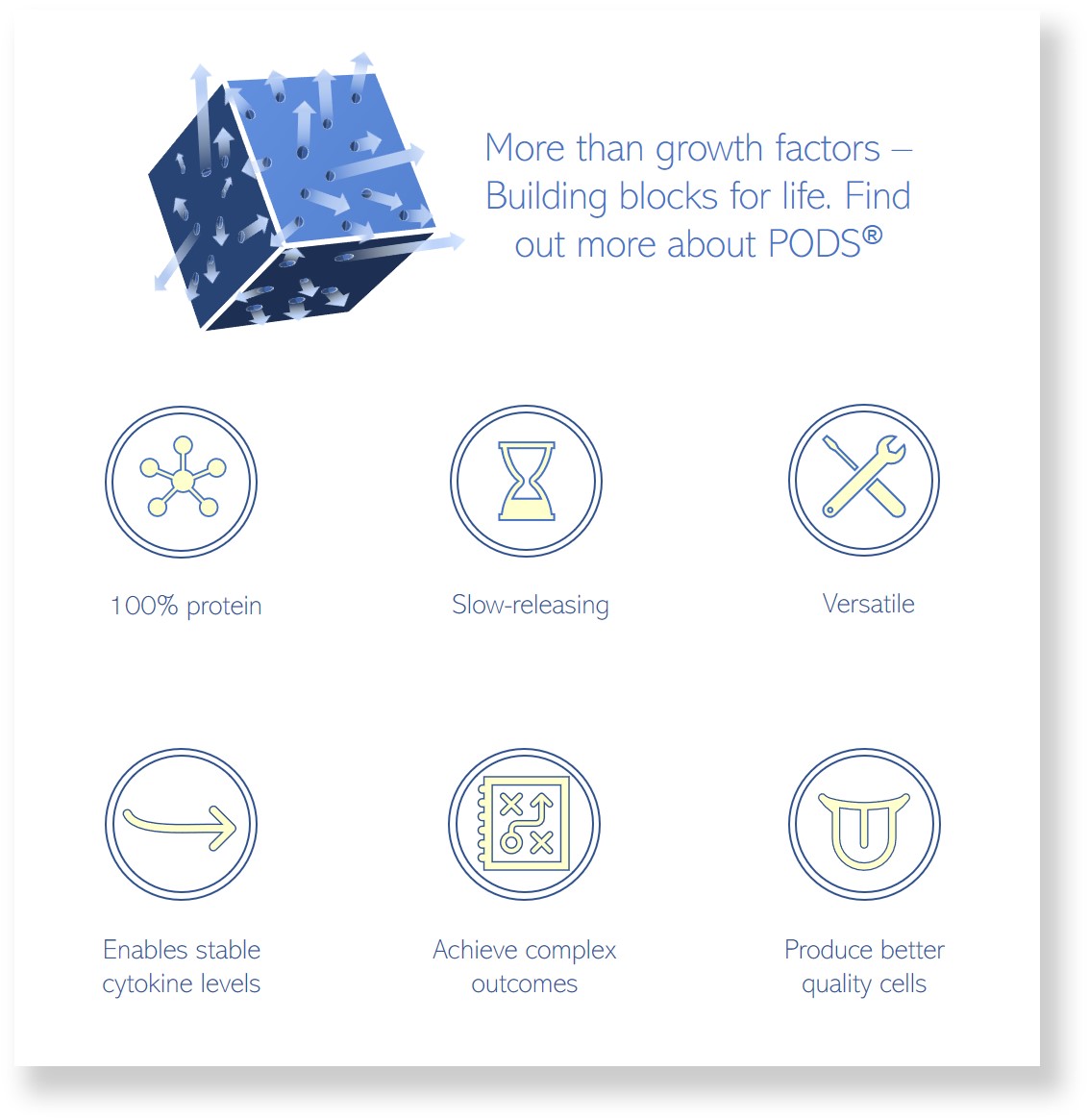Schrödinger's cytokine

Resident cytokines (released from cells in the body) are potent proteins that function at vanishingly low levels (measured in ng/kg). In contrast, therapeutic recombinant cytokines are typically dosed in mg/kg. Similarly, high mg/L concentrations are required for cytokines used in lab-based cell culture or in biomanufacturing. How do almost non-existent resident cytokines manage to achieve their effects?
[A quick note on terminology: growth factors, hormones, cytokines and chemokines have related, overlapping functions (reviewed in an earlier blog article). Here, we’re referring to cytokines/growth factors interchangeably but the same points apply to the other groups to some extent.]
Firstly, cytokines within complex tissues work at a very localized level. Measurements typically provide an average concentration across a tissue sample and don’t record the higher localized concentrations where cytokines are exerting a biological effect.
Secondly, the short half-life of cytokines needs consideration. In some cases, the half-life is just a few minutes. More typically, it’s measured in hours and sometimes days. Local environmental conditions have an important impact on half-life and this is complex. For example, proteases in serum shorten the half-life of protein growth factors. In contrast, other components of the serum, such as heparin, bind to and stabilize growth factors. [Proteins such as heparin also facilitate cytokine receptor binding.] In our lab, we have found, at least for some growth factors, that overall serum has a stabilizing effect.
As a result of continuous degradation, the concentration of a recombinant cytokine is a fast-moving target. Add a cytokine to a cell culture medium at 10 ng/ml and within minutes or hours, the concentration has plummeted. Consequently, the amount of growth factor added is not the optimal concentration for cell culture per se but is a concentration designed to produce a range of concentrations that generate the desired phenotype in cells. In fact, the cells typically experience (potentially toxic) highs, transiting through an optimal zone before ending with sub-optimal and then ineffectual low concentrations.
Half-life is just one variable that dictates the concentration of a cytokine at a given position and time. Growth factors can also be internalized and metabolized by cells. This can create gradient effects at leading edges of cells in culture. More importantly and especially in-vivo, growth factors are continuously renewed by surrounding cells. Notwithstanding some variability, particularly with disease, inflammation, metabolic rate or food-intake, physiological growth factor levels are generally kept within fixed limits.
Compared with the situation in-vivo, cell culture is limited by the half-life of cytokines. Intermittently feeding new growth factor results in peaks and troughs causing cell stress and variability. At Cell Guidance Systems, we’ve developed PODS® growth factors to address this issue. Just like cells, PODS® continuously release a fresh stream of growth factors. This maintains an optimal concentration for surrounding cells. As many research groups have found, the effects on the health of a cell achieved by PODS® optimized and stabilized growth factor levels can be remarkable.
IMAGE: Creative Commons

